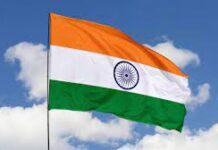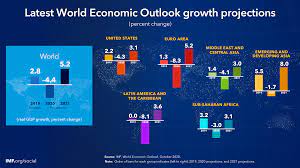At the dawn of the vaccine for covid-19, around a year ago, it was being envisaged that the worst of the pandemic was over, and that in addition to safeguarding life as the first priority, the world would see, if not a V-shaped economic recovery, then at most a short U-shaped recovery, given the natural length of time it would take to carry out a global vaccination drive, and some sort of supply delays to match demand as it picks up.
Yes severe vaccine inequality and the return of Covid-19 in waves in ever so greater potency, like in the shape of its Delta and more recently Omicron mutations, at the back of vaccine apartheid practiced by rich, advanced countries, and the inability of WTO (World Trade Organization) to undo intellectual property rights (IPRs) protection of Covid-19 vaccines even over the duration of the pandemic, followed by a steep global commodity supply shock, and a lack of financial support and adequate debt relief by multilateral organizations like IMF and World Bank– not to mention their inability to reach a financial architecture that safeguarded countries against private sector creditors– all meant that instead the world is going through a deep divide between more vaccinated rich, advanced countries getting on a higher growth recovery, while less vaccinated global south struggling in terms of growth and macroeconomic stability concerns. Even the developed countries are facing a growth prospects damper due to returning severe Covid waves, and rising inflation, that is forcing countries to adopt a tighter monetary policy, where the recession-causing pandemic required a sustained higher level of public and private investments, and making stimulus spending.
Hence, instead the world overall is seeing downward revision in growth prospects for this and the coming year. The recently released Global Economic Prospects report by World Bank highlighted in this regard that ‘After rebounding to an estimated 5.5 percent in 2021, global growth is expected to decelerate markedly to 4.1 percent in 2022, reflecting continued COVID-19 flare-ups, diminished fiscal support, and lingering supply bottlenecks. The near-term outlook for global growth is somewhat weaker, and for global inflation notably higher, than previously envisioned, owing to pandemic resurgence, higher food and energy prices, and more pernicious supply disruptions. Global growth is projected to soften further to 3.2 percent in 2023, as pent-up demand wanes and supportive macroeconomic policies continue to be unwound.’
Moreover, the situation of less-developed countries with regard to recovery prospects is a lot weaker than developed countries, which in general could not inject any significant amount of stimulus spending and development expenditures, along with having low vaccination rates overall, in particular Africa. GEP January 2022, indicated in this regard as follows: ‘Although output and investment in advanced economies are projected to return to pre-pandemic trends next year, in emerging market and developing economies (EMDEs)– particularly in small states and fragile and conflict -afflicted countries– they will remain markedly below, owing to lower vaccination rates, tighter fiscal and monetary policies, and more persistent scarring from the pandemic. …EMDE growth is projected to slow from 6.3 percent in 2021 to 4.6 percent in 2022… In 2023, EMDE growth is forecast to edge further down to 4.4 percent – notably below the 5.1 percent average of the past decade… Despite the continued recovery, the pandemic is expected to scar EMDE output for a prolonged period, in part through its adverse effects on human and physical capital accumulation.’
Improvement in growth prospects will also depend on how well the fast unfolding climate change crisis is tackled, where adequate climate financing is made available to developing countries by rich, advanced countries
The situation of economic growth forecasted in GEP January 2022 is even worse for Pakistan for 2022, and 2023, when compared with that of EMDE overall, where for FY2021/22 it stood at 3.4 percent, and for FY2022/23 it slightly improves to 4 per cent. In the regional context of South Asia, the forecast growth performance of Pakistan stands well below the regional average of 7.6 per cent for 2022, and 6 per cent for 2023; where India and Bangladesh are both expected to outperform Pakistan significantly with regard to economic recovery. In fact, Pakistan’s growth prospects are similar to Sub-Saharan Africa, where the region’s average growth forecast for 2022 stood at 3.6 percent, and for 2023 at 3.8 percent.
As per the current GEP report, per capita income for Pakistan is also expected during the short-term, whereby as per the report ‘In fact, per capita incomes are projected to fall further behind advanced economies in 2021-23 in Bhutan, Nepal, Pakistan (facing the largest relative decline at almost 2 percentage points per year), and Sri Lanka. Despite rebounding growth and an upgraded forecast, the number of people living on less than $1.90 per day is expected to remain above pre-pandemic levels, with tens of millions of new poor in SAR since 2020 (Mahler et al. 2021). Growing poverty rates combined with increases in employment informality, deteriorating labor markets, and rising food insecurity have contributed to inequality (chapter 4; Bussolo, Kotia, and Sharma 2021; World Bank 2021l).’ This indicates that at a time when inflation is rising and is already at a high level in the country, purchasing power is expected to fall, which could further add to the already worse situation of poverty and inequality during the pandemic.
It is, therefore, important, that the world– both developed and developing countries – follow a balanced macroeconomic policy, in a way that a balance is practiced with regard to practicing aggregate demand and supply-side policies. There is also a need for greater financial support from multilateral institutions, with more understanding shown for instance in IMF programmes of the need to internalize this balanced policy approach, along with greater and quicker debt relief provided to developing countries. A recent Guardian published article ‘Developing countries at risk from global economic threats, says World Bank’ highlighted with regard to the GEP report, and comments made by World Bank’s President David Malpass as follows: ‘‘“At a time when governments in many developing economies lack the policy space to support activity if needed, new Covid-19 outbreaks, persistent supply-chain bottlenecks and inflationary pressures, and elevated financial vulnerabilities in large swathes of the world could increase the risk of a hard landing,” the report said. …“Deep debt relief is needed,” Malpass said. “If we wait too long it will be too late and it won’t be successful.”’ Moreover, improvement in growth prospects will also depend on how well the fast unfolding climate change crisis is tackled, where adequate climate financing is made available to developing countries by rich, advanced countries.























